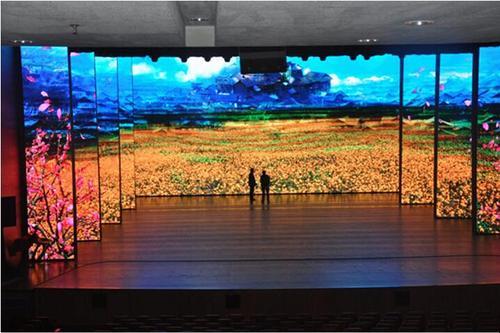A Comprehensive Analysis of Different LED Display Wall Techniques and Their Uses
A Comprehensive Analysis of Different LED Display Wall Techniques and Their Uses
Blog Article
LED display walls are more popular across various environments, such as concerts, athletic events, and corporate presentations. These large big screens are composed of many individual Light Emitting Diode modules that work together to create a single cohesive image. There are multiple kinds of Light Emitting Diode video wall technologies on the market, every having its unique features and benefits. Understanding these technologies technologies can assist companies and organizations choose the appropriate solution for their particular requirements.
One common kind of LED video wall technology is the direct view Light Emitting Diode. Such solution uses separate Light Emitting Diode modules that are arranged closely in proximity to create a large display. Directly viewed Light Emitting Diode walls are known for their elevated brightness and lively hues, which makes them ideal for outdoor events or well-lit illuminated environments. These displays also have a broad viewing angle, allowing indicating that people can see the display clearly at various locations. This renders directly viewed LED walls a favored option for stadiums and external festivals.
Another kind of LED display screen solution is the LED illuminated Liquid Crystal Display. Such technology combines traditional Liquid Crystal Display displays and LED illumination to enhance luminosity as well as hue accuracy. LED illuminated LCDs are often used in interior settings, including shopping centers as well as meeting rooms. These displays provide superior image quality while are generally more cost-effective than direct view Light Emitting Diode screens. Nonetheless, they may often perform as well in bright settings, since the illumination can sometimes wash out the colors.
Another thirdly choice is the OLED video wall. Organic Light Emitting Diode technology offers superior contrast and hue depth in relation to other kinds of screens. Each pixel in an OLED screen emits its individual light, allowing for genuine dark tones and vibrant colors. This renders Organic Light Emitting Diode display screens especially attractive for applications that require high-quality visuals, such as art exhibitions and luxury shopping stores. However, OLED solution can be more costly and may often be as bright as direct view Light Emitting Diode walls, rendering it less suitable for outdoor use.
In addition to these technologies, there are also multiple uses for LED video walls. These displays can be utilized for promotion, entertainment, and data presentation. For example, businesses often use Light Emitting Diode display walls for digital advertising to draw in clients as well as advertise products. In amusement, these displays enhance the visual experience at check out here music events as well as events, providing lively backdrops and captivating images. In corporate environments, Light Emitting Diode video walls can be utilized for demonstrations, visual conferencing, as well as educational sessions, helping to communicate information in a aesthetically appealing way.
In conclusion, LED display screens are available in various technologies, every having its own advantages as well as applications. Direct view Light Emitting Diode screens are great for external applications, while LED illuminated Liquid Crystal Displays are more suitable for indoor settings. Organic Light Emitting Diode display screens offer exceptional image clarity but may come at a greater cost. Understanding the differences differences can help organizations to make informed choices about which type of Light Emitting Diode video wall most meets their requirements, whether it be for advertising, amusement, and corporate applications.